In the heart of the South Pacific islands with Maewan
Aboard Maewan, Erwan Le Lann and his crew venture into the planet’s most extreme places—from the Arctic to Antarctica—while observing humanity’s impact on the environment.
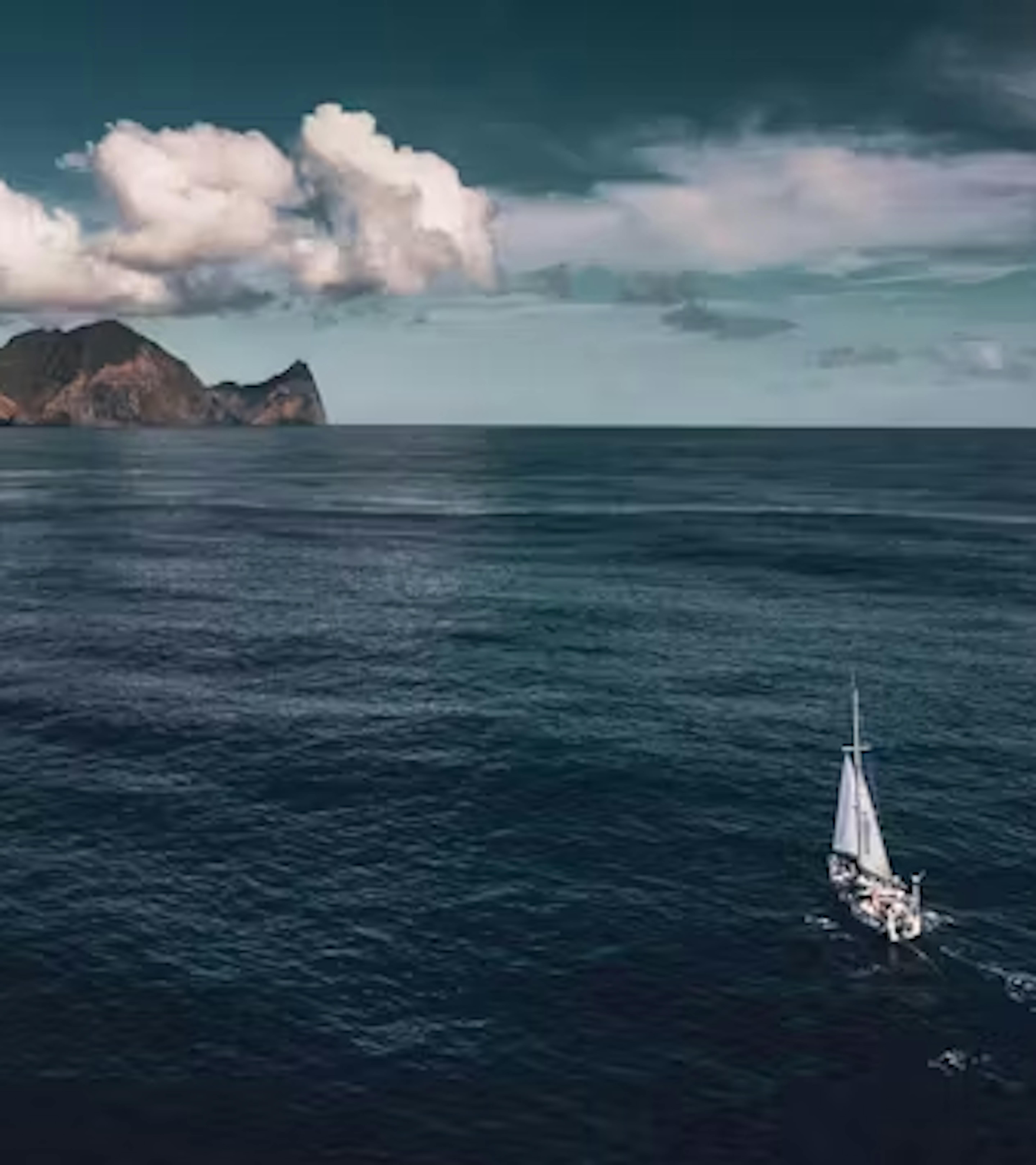
The small sailboat, a nomadic operational platform, is the support of educational and environmental actions in which high-level athletes take part. To the rhythm of the wind, the captain tells us about the latest crossing, between Polynesia and Chile, to meet almost unexplored lands and the inhabitants of the South Pacific.

We weigh anchor in Cook Bay, in Moorea. It is one of those paradisiacal islands of French Polynesia, near Tahiti. Coconut trees line the inner bays, protected by the coral reef, where sharks, rays, turtles and fish coexist. The sun tans our skin and shines in our eyes. We enjoy the moment, our stopover in the “Windward Islands” ends. It is time to leave, further, to continue this adventure of discoveries that has driven us for five years already. Today, we head for Chile and the Patagonian channels. A long three-month navigation, where islands are rare.
There are four of us on board Maewan: Fabienne d’Ortoli, Jérémy Bernard, Joseph Grierson and myself. Fabienne is a kitesurfer, multiple world champion. Jérémy Bernard is a sports photographer and turns each photo into a work of art. Joseph Grierson is our young deckhand, the ideal sailor.
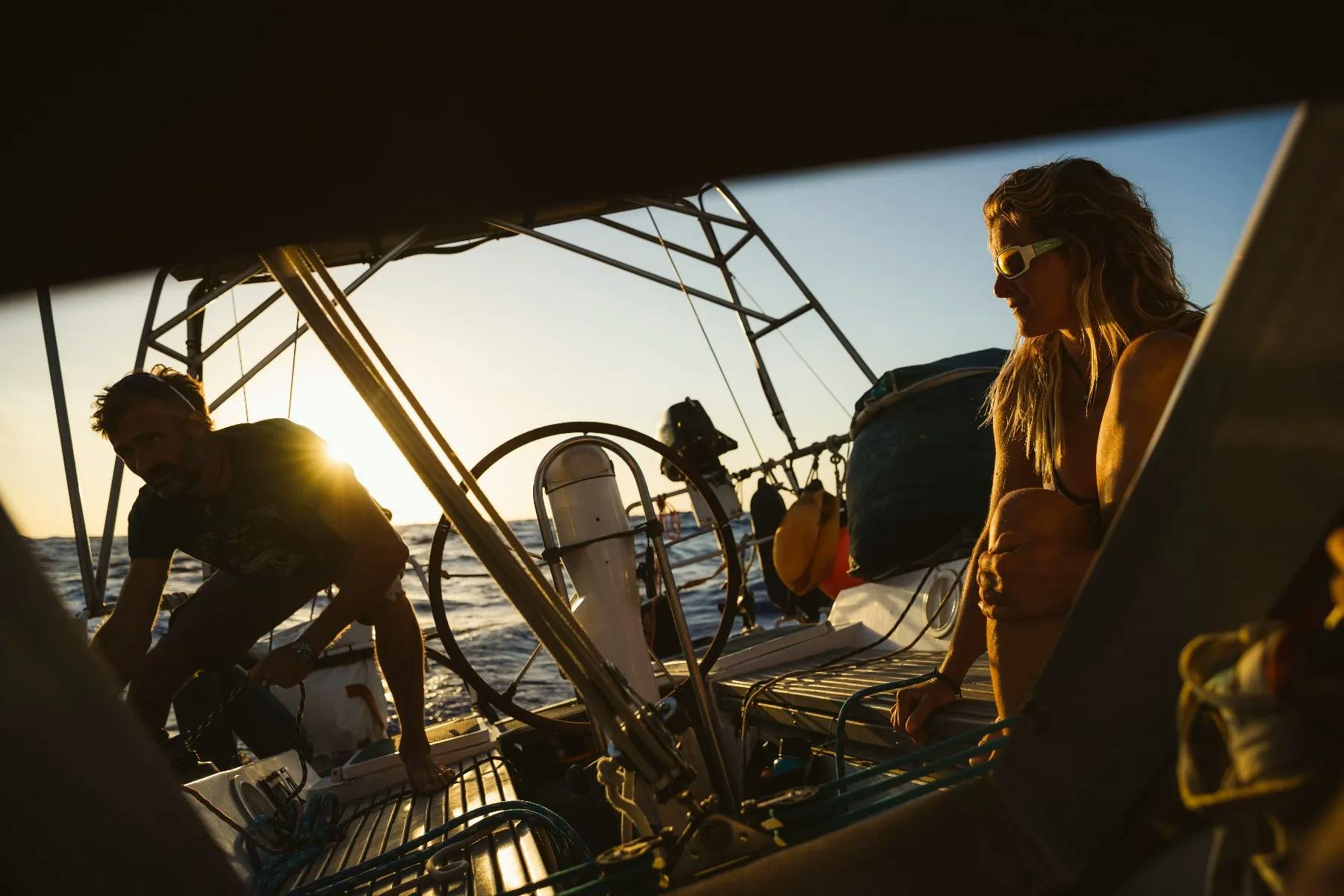
This new expedition, which wraps up our year 2019, takes us to discover some of the most isolated islands in the world: Rapa Iti, Pitcairn Islands, Isla de Pascua and Juan Fernández. Outside maritime routes, some have never been inhabited. Few boats stop there.
RAPA ITI
The “little Rapa” is the first on our route. It is the southernmost island of Polynesia. The next land further south is Antarctica, to the east Chile, to the west New Zealand. Here, contact with the outside world is rare. Only one boat calls here every two months.
After going around the island from the south, we enter the inner bay at nightfall. The port lights guide us until our arrival at the pontoon. We thought we were expected by the school principal. In reality, it is the whole village that welcomes us: songs, dances and traditional meal, a beautiful surprise after eight days at sea!
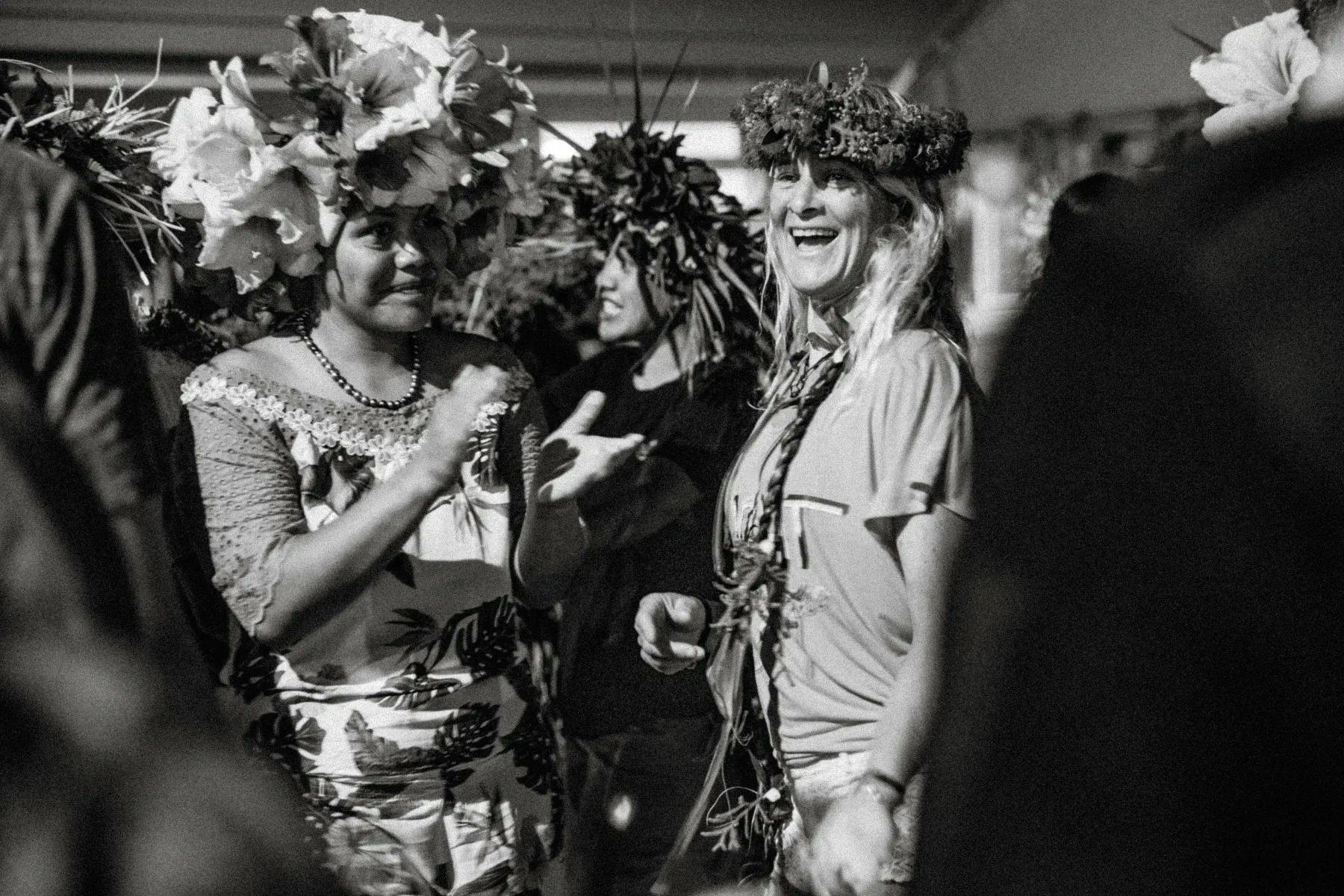
During our stay on the island, we will protect endemic plants, wild goats, pick fruits and above all share our stories around the world with the schoolchildren and the entire population. One evening, during a village meeting, a discussion arises around the management of natural resources. The mayor explains to us that here each resource is a communal good, whose use, extraction or preservation is discussed by the fourteen elders of the island. Fishing and agriculture are practiced in a reasoned way to feed a population concentrated around the lagoon. The large green valleys are reserved for future climate refugees from the Tuamotu Islands, soon to be submerged by rising waters… We discover a people turned towards the future, working sustainably for future generations.
We leave a week later, necklaces around our necks and the boat filled with fish and bananas. In Maewan’s wake, Rapa Iti disappears on the horizon. Heading for the Pitcairn Islands.
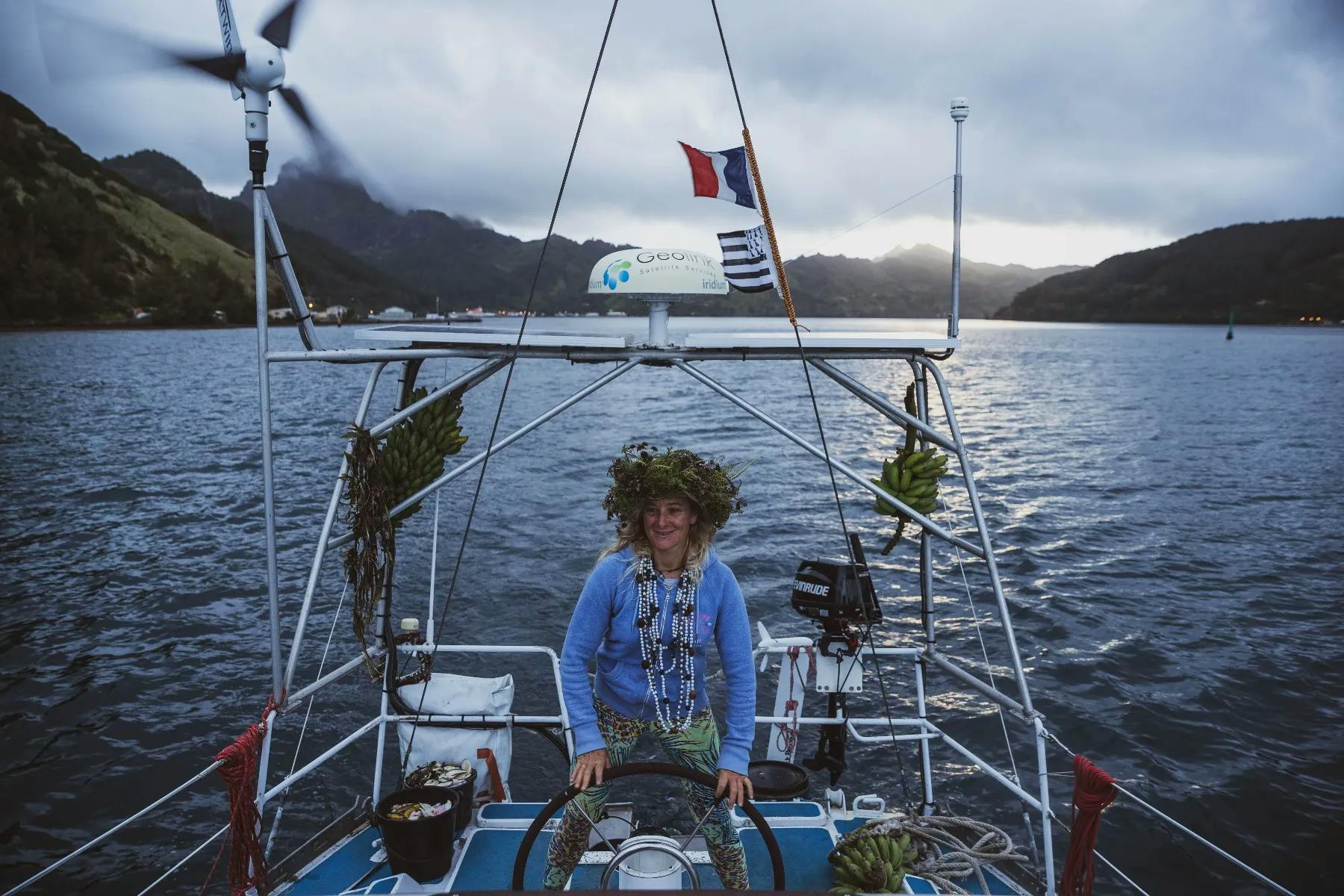
PITCAIRN ISLANDS
On board, life gets organized. The manoeuvres follow one another. The days go by, they seem long. We head a bit north towards the Pitcairn Islands. A steering wheel failure finally pushes us to make a stop in Adamstown, the only inhabited island of the archipelago, populated by 46 souls. An island full of legends. We are welcomed by a couple of pirates. The Adventist church sits at the center of the village, like the anchor of the HMS Bounty, a frigate of the British Royal Navy, which entered history because of its mutiny.
Weather conditions force a longer pit stop than expected. We must change anchorage to better shelter ourselves. It rains, the sky is low, it is a good sign of weather change.
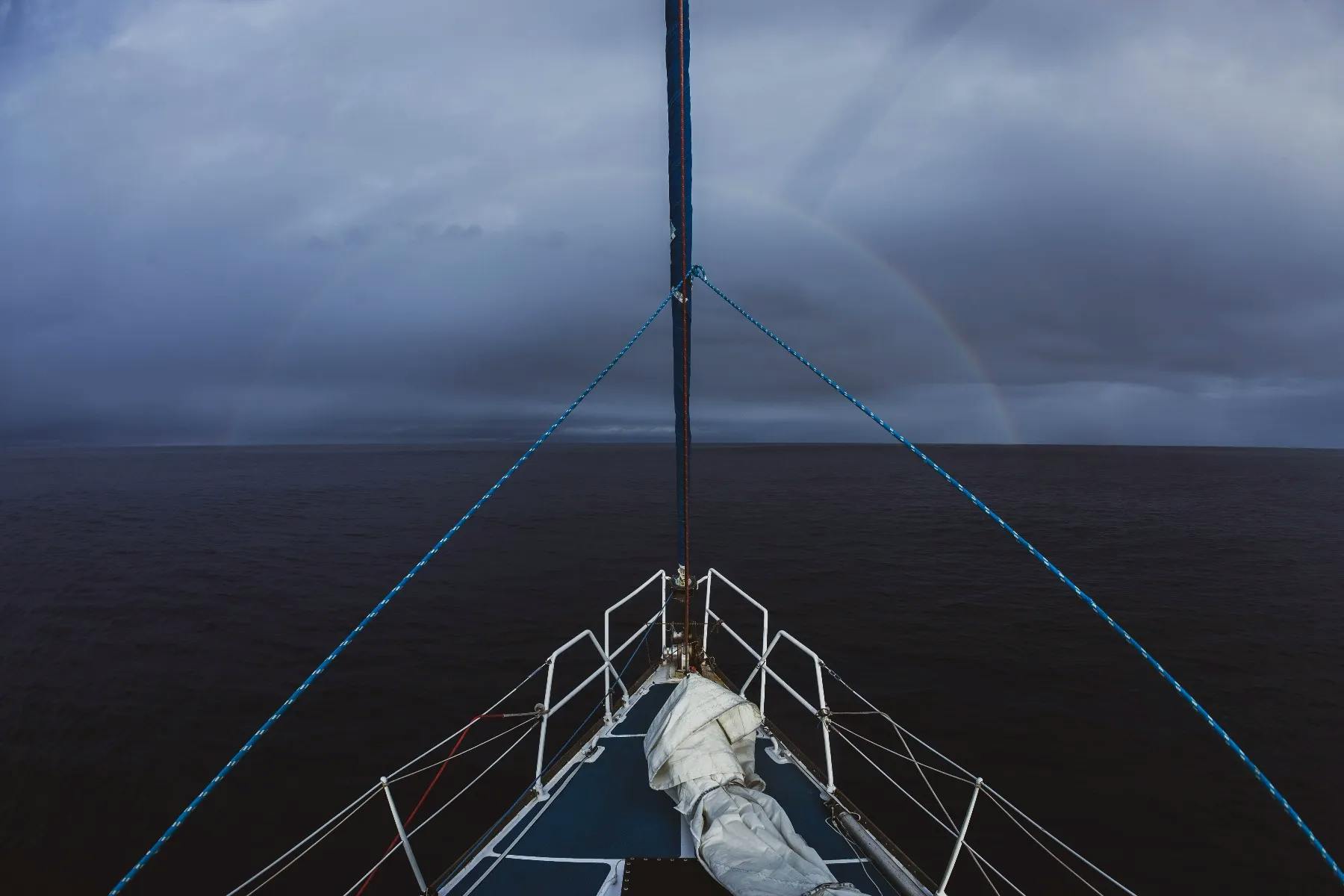
Four small islands form this Pitcairn archipelago, including Ducie. It is the most remote, the smallest, never inhabited. It is a desert atoll, without fresh water, a virgin island of the Pacific. Our chance of being able to land there is almost zero. The atoll is round and offers no protection to anchor Maewan, but we are too curious not to go see it.
After two days of sailing, we approach Ducie. It is there, in front of us, less than ten nautical miles away, yet we still do not see it! It must be flat like an atoll without coconut trees. But the signs of a nearby island do not lie: thousands of birds fly above our heads, observing these strangers that we are. Frigatebirds, Brown boobies, Petrels, the island is a kingdom for birds. We end up distinguishing it. By miracle, the weather is perfectly calm. In water as translucent as ever, where we contemplate corals and fish, we drop anchor on a small white sand plain. Fabienne jumps into the water, quickly surrounded by magnificent and countless curious fish. A postcard landscape...
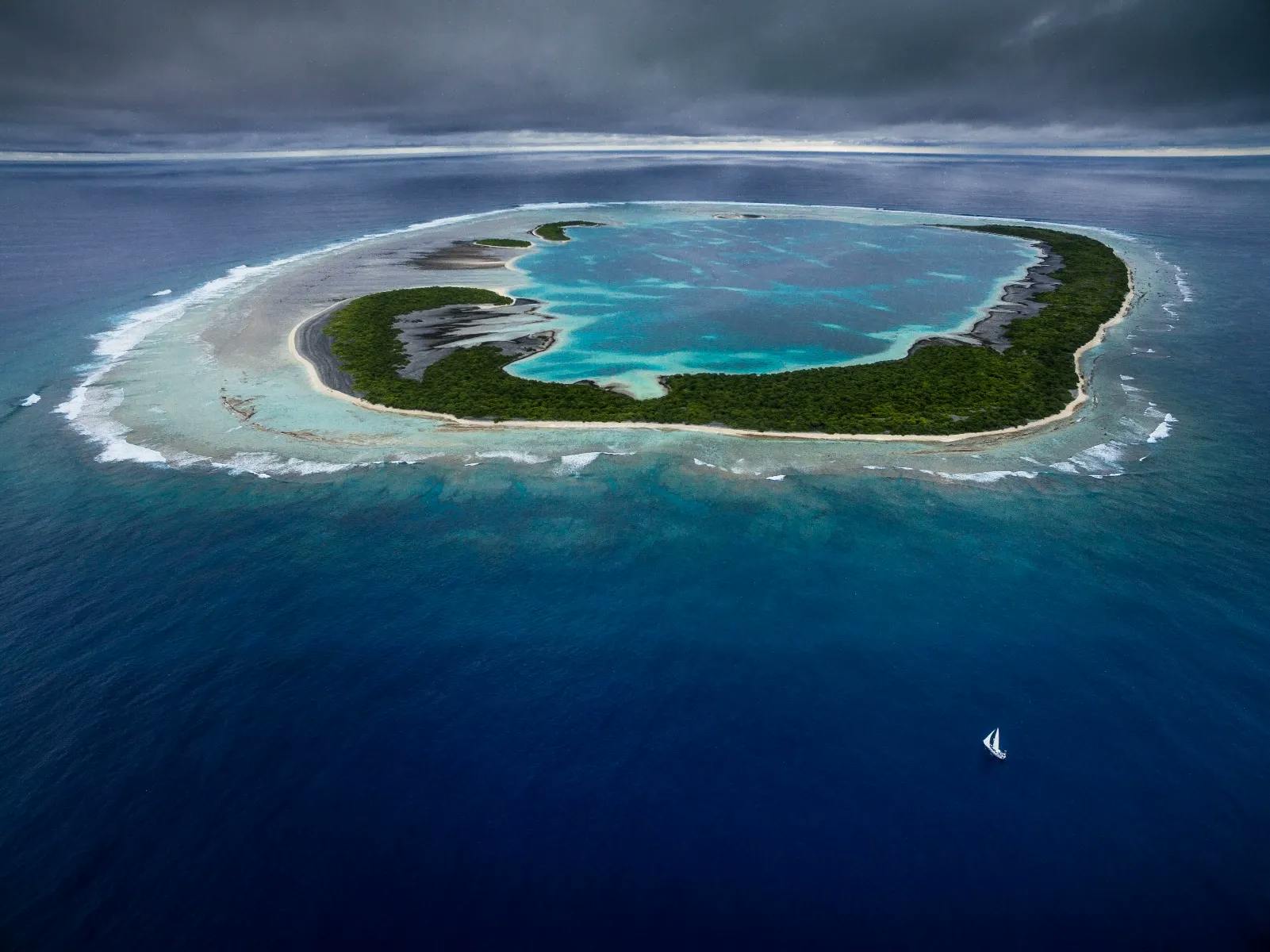
Once ashore, we zigzag carefully between the chicks nesting on the ground. Then behind the vegetation, we discover the lagoon. The water is turquoise. Walls of ancient corals form a gigantic and sumptuous labyrinth. An intact and preserved place, we tell ourselves… And yet, more than 5,000 kilometers from the Peruvian coasts, this paradise on earth questions us: “Why am I entirely covered with your waste? What should I do with your razors, toothbrushes, shoes, bottles, buoys and other plastic bags?” We are speechless, filled with bitterness. A feeling that a few delicious grilled fish, eaten after cleaning the beach, barely manage to erase. We must nevertheless return to the sea. Another two-week leg awaits us to reach Rapa Nui, Easter Island.

ISLA DE PASCUA
Three days of contrary winds delay us a little. For Fabienne, seasickness is persistent. So she scans the horizon, takes the helm for long hours then ends up collapsing in bed, exhausted, in the only acceptable position for her on board: lying down.
The weather files announce the arrival of a big gust of wind from the south of Easter Island. We speed up to get ahead of it and take shelter. On deck, we observe the slightest detail that will give us the first keys to understanding the life that has settled here. The place is mythical, surrounded by stories and mysteries. Our excitement grows.
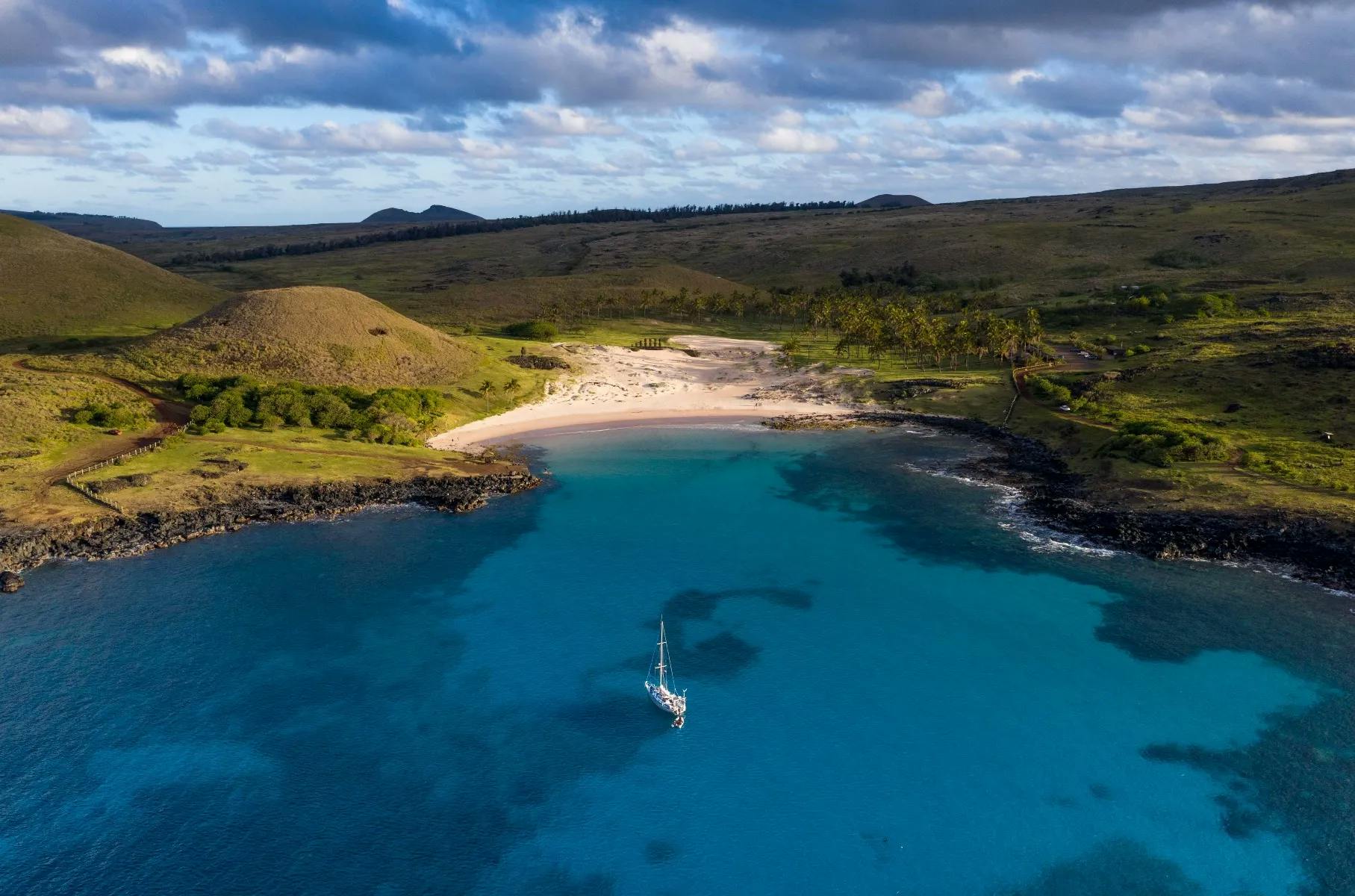
We head south, very close to a rocky islet, where the big swell allows us a few nice surfs. On land, Marion Courtois, president of the Maewan association, and Morgan Le Lann, our press officer, are waiting for us. They push hard so that the Chilean customs officers come to do their work on board. Only, the storm prevents them. Three endless days will pass before we are finally authorized to set foot on land!
We land on the only beach of fine white sand, at Anakena. A row of Moai, monumental statues carved from volcanic rock, have their gaze turned towards the village. The tallest measures 19 meters high! They were erected so that the “Mana” (the spirit) of the elders would accompany future generations. For 900 years, hundreds of Moai were sculpted to protect the inhabitants of the island. Once overpopulated, prey to clan wars and struck by diseases imported by Europeans, its population was almost wiped out at the end of the 19th century. Today, there are more than 7,000 Pascuans, defenders of a cultural heritage.

From this fascinating history that Keka, our host during our week on the island, tells us, we also discover the existence of mass tourism, fed by two to four planes daily. Attracted by the Moai, the 100,000 annual visitors generally do not stay long on the island, three days at most, but the impact of their presence is real and worrying. Fish stocks are depleting, waste is piling up, crops are disappearing and 4x4s have replaced the horses that roam freely, soon too numerous. Easter Island has lost its autonomy, drinking water is imported from Chile, and life here now hangs by a thread, that of the air bridge. On life support, the island sees its sad past reappear. History seems to repeat itself but the awareness of the inhabitants is accelerating. The fate of the island is today in their hands…
It is here that the expedition ends for Fabienne, Jérémy and Morgan. With Marion and Joseph, we embark for the last part of this long crossing of the South Pacific.
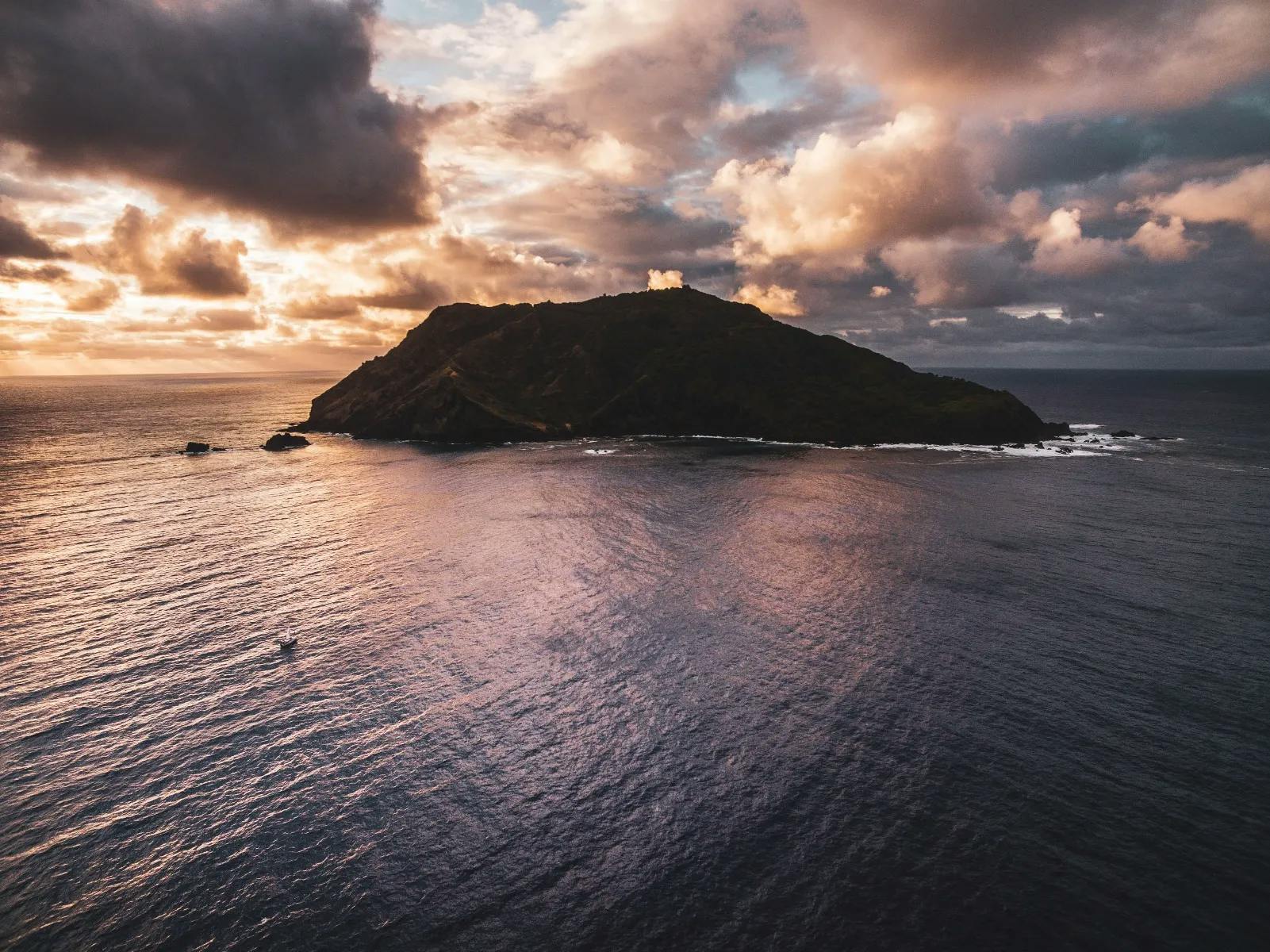
JUAN FERNÁNDEZ
On our route, we discover a small island on the map: Robinson Crusoe! We decide to divert to visit it. After several days of sailing, it appears on the horizon, taller than ever. The south-west swell pushes us to find shelter on the east coast. A seal greets us! The approach is long, the wind absent. As we pass the northern point, a light appears. On the map is marked a buoy, unless it is a lighthouse. In perfect Spanish, Marion attempts radio communication. The response comes quickly, the island is inhabited! Blindly, we drop anchor for the night.
The next morning, we discover a community of lobster fishermen who live there eight months of the year, in self-sufficiency. The island, on which the famous Scottish castaway Alexander Selkirk lived in absolute solitude at the beginning of the 18th century, seems inhospitable but it teems with marine life. Marion spends two days with the teacher and her handful of students. The exchanges are fascinating, but curiously Robinson Crusoe, the only populated island of the Juan Fernández archipelago, seems to us a bit too civilized... And the coming storm urges us to weigh anchor for our final voyage towards Puerto Montt and the continent.

We decide to head due south, into the heart of the depression, pushing Maewan to its limits. A good warm-up before the great south and its hostile latitudes! We are “spoiled”: the troughs are enormous, the winds blow at nearly 50 knots, waves crash over the deck… We take turns at the helm. The constant noise keeps us awake but fatigue begins to set in. Fortunately, after three intense days, the wind dies down. Chile is in front of us. A page of the Maewan adventure turns. Another remains to be written…




